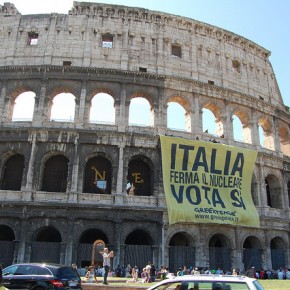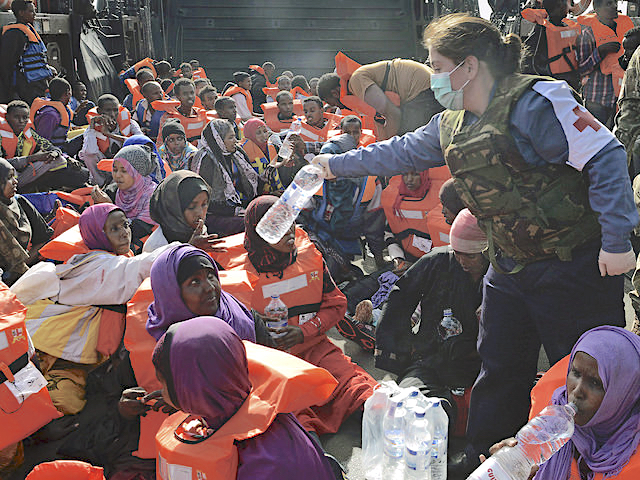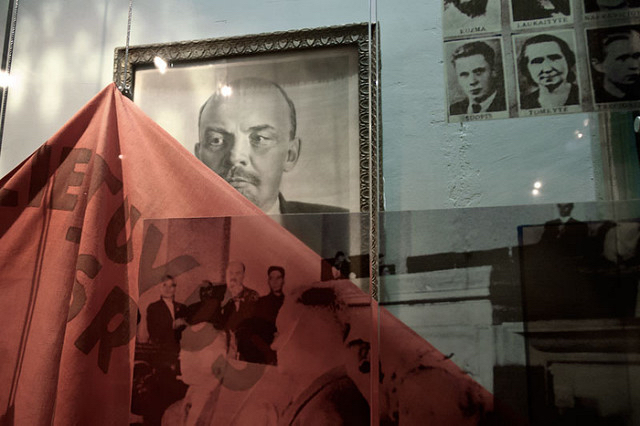Passing further away, towards Austria, travelling up the Isar, till the stream becomes smaller and whiter and the air is colder, the full glamour of the northern hills, which are so marvellously luminous and gleaming with flowers, wanes and gives way to a darkness, a sense of ominousness.
Up there I saw another little Christ, who seemed the very soul of the place. The road went beside the river, that was seething with snowy ice-bubbles, under the rocks and the high, wolf-like pine-trees, between the pinkish shoals. The air was cold and hard and high, everything was cold and separate. And in a little glass case beside the road sat a small, hewn Christ, the head resting on the hand; and he meditates, half-wearily, doggedly, the eyebrows lifted in strange abstraction, the elbow resting on the knee.
Detached, he sits and dreams and broods, wearing his little golden crown of thorns, and his little cloak of red flannel that some peasant woman has stitched for him. No doubt he still sits there, the small, blank-faced Christ in the cloak of red flannel, dreaming, brooding, enduring, persisting. There is a wistfulness about him, as if he knew that the whole of things was too much for him. There was no solution, either, in death. Death did not give the answer to the soul’s anxiety. That which is, is. It does not cease to be when it is cut. Death cannot create nor destroy. What is, is.
The little brooding Christ knows this. What is he brooding, then? His static patience and endurance is wistful. What is it that he secretly yearns for, amid all the placidity of fate? ‘To be, or not to be,’ this may be the question, but is it not a question for death to answer. It is not a question of living or not-living. It is a question of being–to be or not to be. To persist or not to persist, that is not the question; neither is it to endure or not to endure. The issue, is it eternal not-being? If not, what, then, is being?
For overhead the eternal radiance of the snow gleams unfailing, it receives the efflorescence of all life and is unchanged, the issue is bright and immortal, the snowy not-being. What, then, is being? As one draws nearer to the turning-point of the Alps, towards the culmination and the southern slope, the influence of the educated world is felt once more. Bavaria is remote in spirit, as yet unattached. Its crucifixes are old and grey and abstract, small like the kernel of the truth.
Further into Austria they become new, they are painted white, they are larger, more obtrusive. They are the expressions of a later, newer phase, more introspective and self-conscious. But still they are genuine expressions of the people’s soul. Often one can distinguish the work of a particular artist here and there in a district.

In the Zemm valley, in the heart of the Tyrol, behind Innsbruck, there are five or six crucifixes by one sculptor. He is no longer a peasant working out an idea, conveying a dogma. He is an artist, trained and conscious, probably working in Vienna. He is consciously trying to convey a _feeling_, he is no longer striving awkwardly to render a truth, a religious fact. The chief of his crucifixes stands deep in the Klamm, in the dank gorge where it is always half-night.
The road runs under the rock and the trees, half-way up the one side of the pass. Below, the stream rushes ceaselessly, embroiled among great stones, making an endless loud noise. The rock face opposite rises high overhead, with the sky far up. So that one is walking in a half-night, an underworld.
And just below the path, where the pack-horses go climbing to the remote, infolded villages, in the cold gloom of the pass hangs the large, pale Christ. He is larger than life-size. He has fallen forward, just dead, and the weight of the full-grown, mature body hangs on the nails of the hands. So the dead, heavy body drops forward, sags, as if it would tear away and fall under its own weight. It is the end.
The face is barren with a dead expression of weariness, and brutalized with pain and bitterness. The rather ugly, passionate mouth is set for ever in the disillusionment of death. Death is the complete disillusionment, set like a seal over the whole body and being, over the suffering and weariness and the bodily passion. The pass is gloomy and damp, the water roars unceasingly, till it is almost like a constant pain.
The driver of the pack-horses, as he comes up the narrow path in the side of the gorge, cringes his sturdy cheerfulness as if to obliterate himself, drawing near to the large, pale Christ, and he takes his hat off as he passes, though he does not look up, but keeps his face averted from the crucifix. He hurries by in the gloom, climbing the steep path after his horses, and the large white Christ hangs extended above.
The driver of the pack-horses is afraid. The fear is always there in him, in spite of his sturdy, healthy robustness. His soul is not sturdy. It is blenched and whitened with fear. The mountains are dark overhead, the water roars in the gloom below. His heart is ground between the millstones of dread. When he passes the extended body of the dead Christ he takes off his hat to the Lord of Death. Christ is the Deathly One, He is Death incarnate. And the driver of the pack-horses acknowledges this deathly Christ as supreme Lord.

The mountain peasant seems grounded upon fear, the fear of death, of physical death. Beyond this he knows nothing. His supreme sensation is in physical pain, and in its culmination. His great climax, his consummation, is death. Therefore he worships it, bows down before it, and is fascinated by it all the while. It is his fulfilment, death, and his approach to fulfilment is through physical pain. And so these monuments to physical death are found everywhere in the valleys. By the same hand that carved the big Christ, a little further on, at the end of a bridge, was another crucifix, a small one.
This Christ had a fair beard, and was thin, and his body was hanging almost lightly, whereas the other Christ was large and dark and handsome. But in this, as well as in the other, was the same neutral triumph of death, complete, negative death, so complete as to be abstract, beyond cynicism in its completeness of leaving off. Everywhere is the same obsession with the fact of physical pain, accident, and sudden death. Wherever a misfortune has befallen a man, there is nailed up a little memorial of the event, in propitiation of the God of hurt and death.
A man is standing up to his waist in water, drowning in full stream, his arms in the air. The little painting in its wooden frame is nailed to the tree, the spot is sacred to the accident. Again, another little crude picture fastened to a rock: a tree, falling on a man’s leg, smashes it like a stalk, while the blood flies up. Always there is the strange ejaculation of anguish and fear, perpetuated in the little paintings nailed up in the place of the disaster.
This is the worship, then, the worship of death and the approaches to death, physical violence, and pain. There is something crude and sinister about it, almost like depravity, a form of reverting, turning back along the course of blood by which we have come.
Turning the ridge on the great road to the south, the imperial road to Rome, a decisive change takes place. The Christs have been taking on various different characters, all of them more or less realistically conveyed. One Christus is very elegant, combed and brushed and foppish on his cross, as Gabriele D’Annunzio’s son posing as a martyred saint. The martyrdom of this Christ is according to the most polite convention. The elegance is very important, and very Austrian. One might almost imagine the young man had taken up this striking and original position to create a delightful sensation among the ladies.
It is quite in the Viennese spirit. There is something brave and keen in it, too. The individual pride of body triumphs over every difficulty in the situation. The pride and satisfaction in the clean, elegant form, the perfectly trimmed hair, the exquisite bearing, are more important than the fact of death or pain.
This may be foolish, it is at the same time admirable. But the tendency of the crucifix, as it nears the ridge to the south, is to become weak and sentimental. The carved Christs turn up their faces and roll back their eyes very piteously, in the approved Guido Reni fashion. They are overdoing the pathetic turn. They are looking to heaven and thinking about themselves, in self-commiseration.
Others again are beautiful as elegies. It is dead Hyacinth lifted and extended to view, in all his beautiful, dead youth. The young, male body droops forward on the cross, like a dead flower. It looks as if its only true nature were to be dead. How lovely is death, how poignant, real, satisfying! It is the true elegiac spirit.
Then there are the ordinary, factory-made Christs, which are not very significant. They are as null as the Christs we see represented in England, just vulgar nothingness. But these figures have gashes of red, a red paint of blood, which is sensational.
Adapted from Twilight in Italy, by D.H. Lawrence (1916). Photographs courtesy of Christian Kadluba, John Ehr, and Duncan C. Published under a Creative Commons license.





